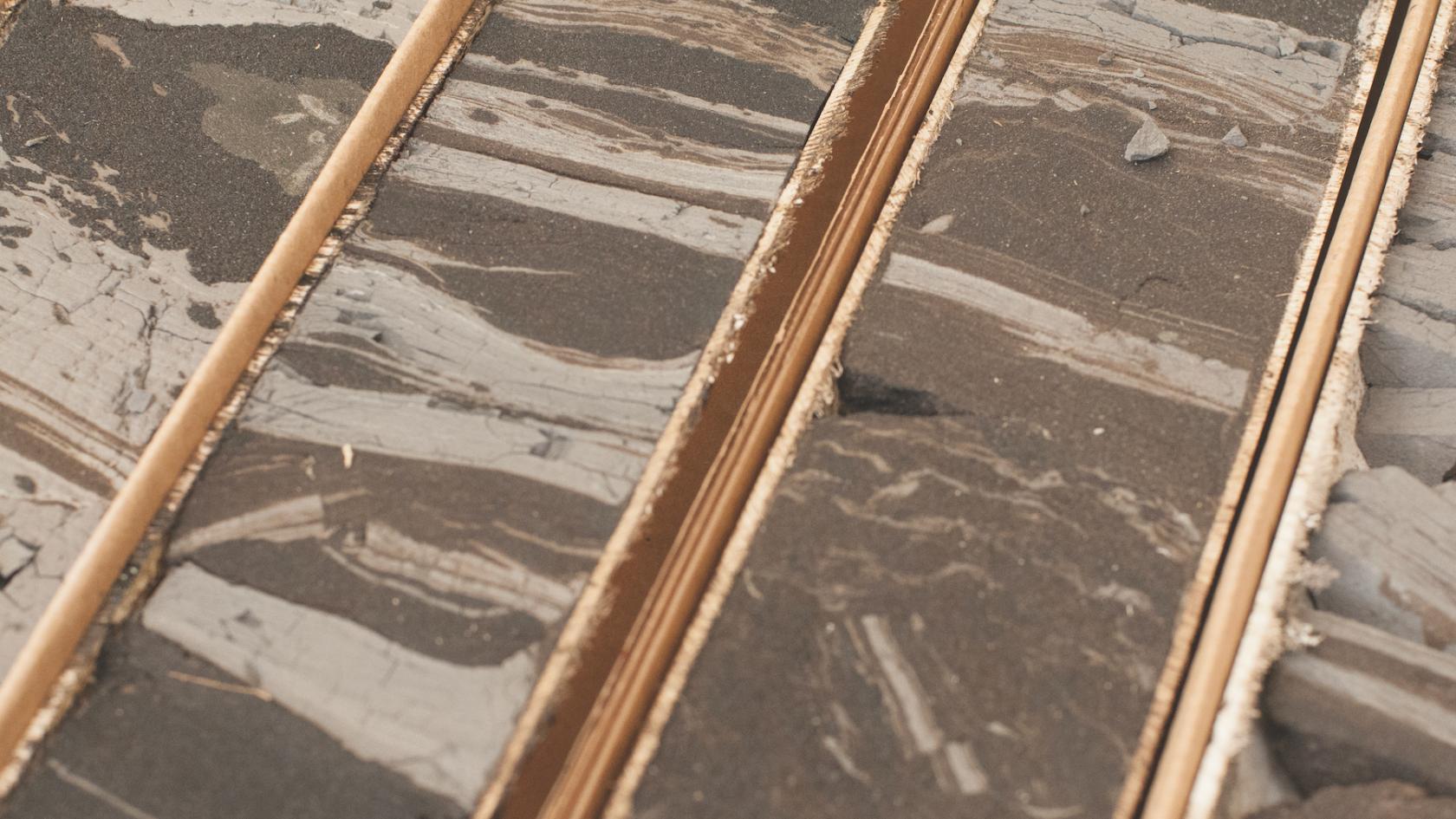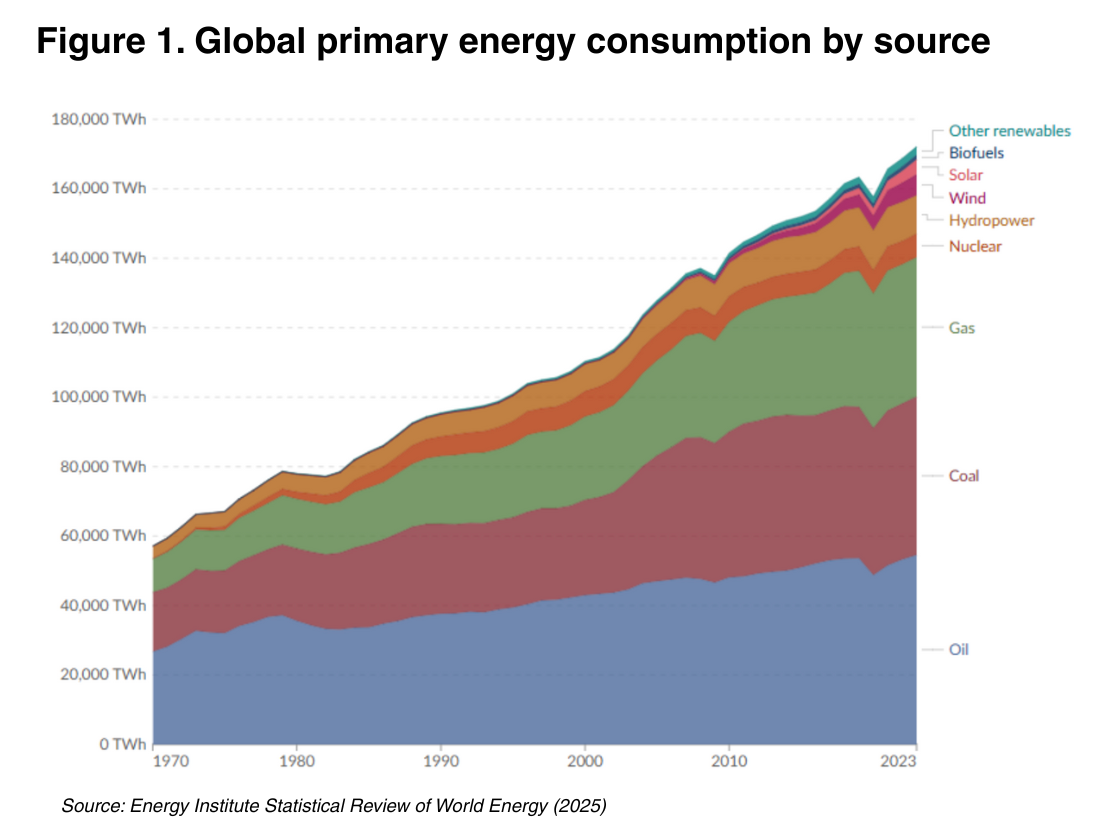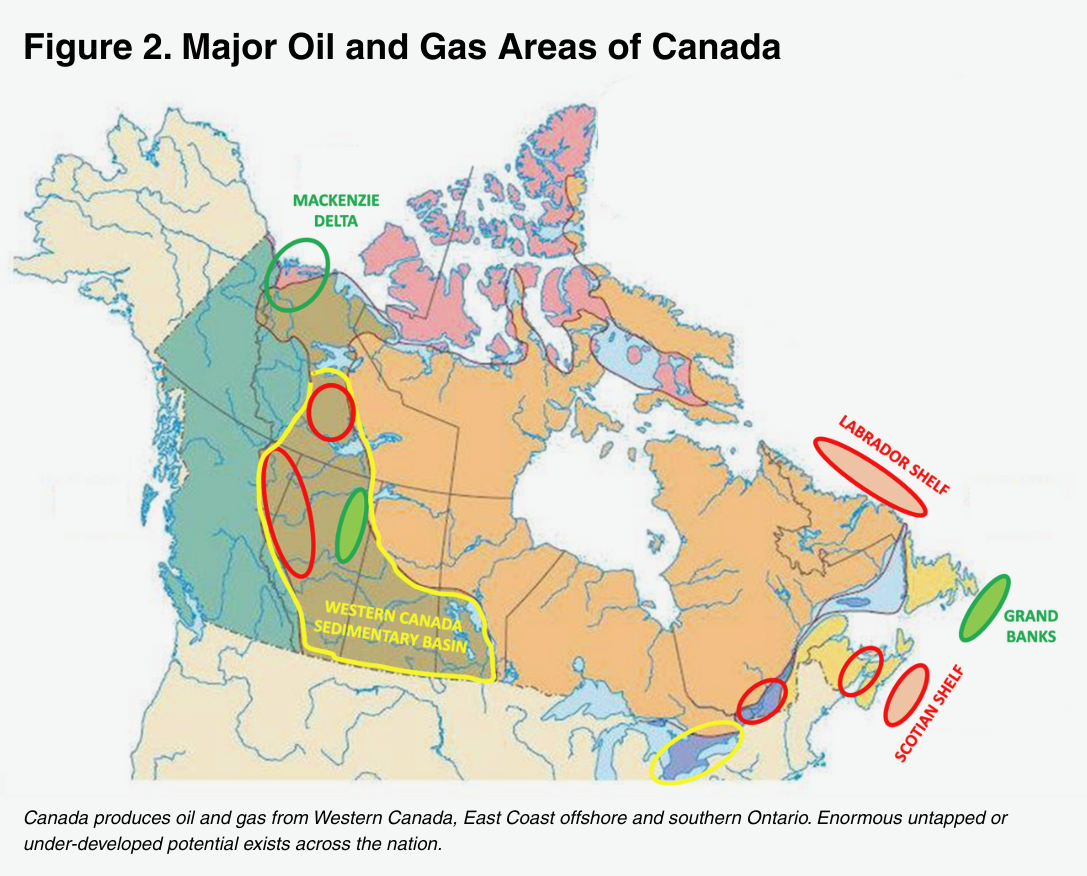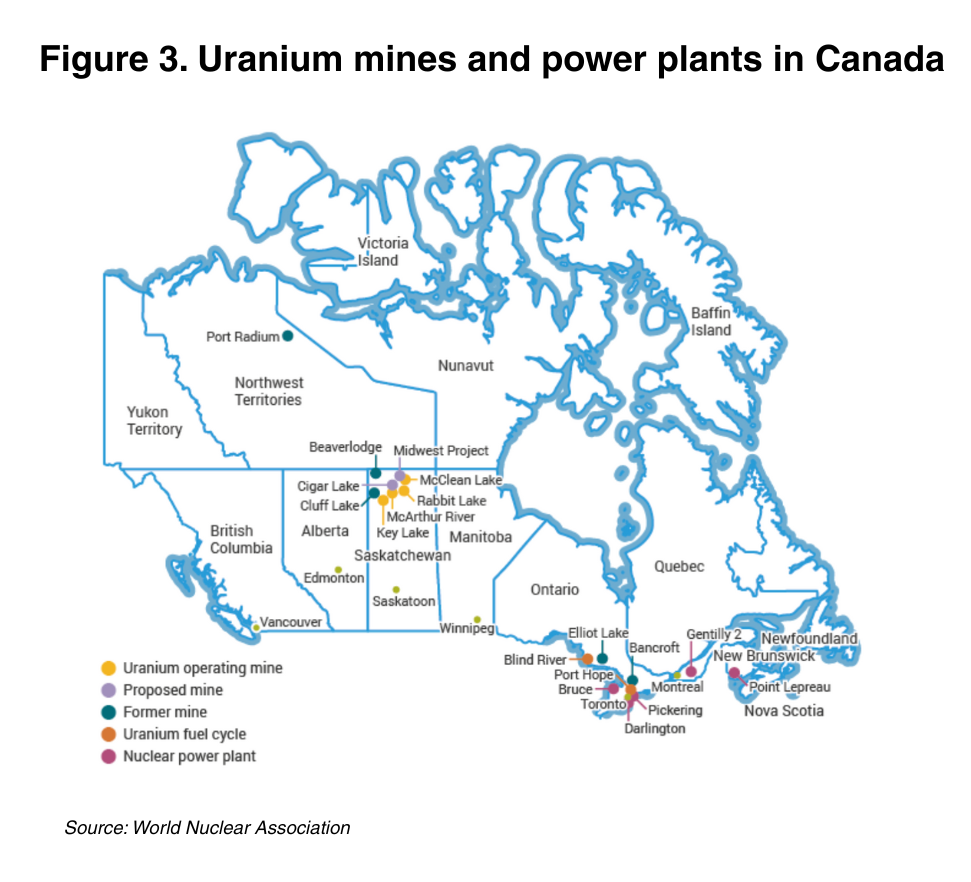We hear about Canada’s aspirations to become an “energy superpower” a lot these days. Easy to say, but what does it really mean? And if Canada can indeed become an energy superpower, how can we achieve that status?
Energy is at the core of everything humanity does. Growing our food, building and running our homes and businesses, making the goods and services we consume, and moving those goods – and ourselves – from place to place.
Energy security is one of the most important human needs because we can’t live our lives without energy.
But many global citizens don’t have energy security today. Hundreds of millions of people around the world have little or no access to electricity, and billions more don’t have enough electricity to live a basic modern lifestyle.
Many nations, even rich nations like Japan and Germany, can’t produce enough energy to meet the needs of their own citizens and industries, and have to rely on energy imports of coal, oil, gas, uranium and electricity from their neighbours and trading partners.
Only a few countries – like Canada, the United States, Australia and Saudi Arabia – are energy powers. They have substantial populations with modern, high-energy economies and they produce so much energy that they can export to others.
But Canada stands out with the potential to be an energy superpower because our energy resources are enormous and diverse, supported by incredible geological riches across the entire country.
The Global Energy Mix
More than 80 per cent of the energy humanity consumes comes from fossil fuels (oil, natural gas and coal). Long-term trends demonstrate that we will depend on fossil fuels for decades to come.
Figure 1 shows global primary energy consumption by source for all our needs: electricity, industry, transportation and heat.
The key to this graph is that we live in a time of energy addition – we’re using more energy from every source, all the time. Nothing is being displaced because there are more people on Earth every year, and each one of us wants a modern, energy-rich lifestyle.
Canada’s unique blessing as a budding energy superpower is that we are or have the potential to be a big player in all major categories of energy production, including oil and gas, nuclear power, hydroelectricity, renewables, lithium, hydrogen and coal.
Our strength lies in our huge and diverse geological resources.
Oil and Gas
Leading Canada’s enormous resource base is oil and gas. Geologists have discovered oil and gas in sedimentary basins across western, northern, central and eastern Canada (Fig. 2).
Regarding oil, people think immediately about Alberta’s oil sands, which give Canada the fourth-largest global oil reserves. These reserves are being systematically and efficiently produced at rates that will support domestic consumption and exports for decades to come.
We also have substantial oil reserves and production from traditional reservoirs in Western Canada and offshore Eastern Canada, where the Hibernia oilfield is a global supergiant.
But there’s more. These reserves represent only oil that has been discovered and proven economically viable to develop using existing technology.
Our resource base – oil deposits we have identified but haven’t yet built the infrastructure or technology to access – is huge, diverse and world-leading.
Canada’s untapped oil resources include untested oil sands plays, oil hosted in shales, undeveloped conventional oil discoveries in the Far North and huge oil resources off our eastern coast that are only now being explored.
Canada not only supplies all its own oil needs, but it is also the fourth-leading oil exporter in the world today by volume. It has the resources to maintain and improve that position in the long term.
The story is similar for natural gas.
Our traditional gas reserves were developed decades ago to fill our own needs and for export to the United States. Horizontal drilling and hydraulic fracturing technologies have increased our gas reserves base immensely over the past 20 years as we develop world-class shale gas plays like the Montney Formation in west-central Alberta and northeastern British Columbia.
And like our oil resources, Canada’s gas resources have grown over time – with shale gas plays holding literally centuries of producing potential in Alberta, B.C., and the Northwest Territories.
Other plays in Quebec, Ontario and the Maritimes have been mapped and await validation by drilling more wells. And let’s not forget massive but remote conventional gas discoveries and resource potential in the Northwest Territories, offshore Newfoundland and Labrador, and offshore Nova Scotia.
Nuclear Power – Uranium
Electricity generation from nuclear fission has been an important component of global energy supply since the 1970s, and is rising again today (Fig. 1). Growth is accelerating as more people in more countries appreciate nuclear’s reliability and low emissions profile.
Canada is a nuclear leader with its CANDU nuclear generation technology, but also because of its rich uranium resources.
Uranium is found in igneous and metamorphic rocks of the Canadian Shield, the geological heart of Central and Eastern Canada (orange area in Fig. 2). We have active mines in northern Saskatchewan and a rich inventory of uranium exploration prospects and resources in Ontario, Manitoba, Saskatchewan and the Northwest Territories (Fig. 3).
Canada is the world’s second-leading producer and exporter of uranium, supplying our own nuclear reactors and many others across the globe – and has the resource base to improve that position as nuclear demand grows.
The World Nuclear Association has some great information about Canada’s uranium resources at https://world-nuclear.org/information-library/country-profiles/countries-a-f/canada-uranium, and the Canadian Nuclear Safety Commission has more on Canadian uranium mines and mills at https://www.cnsc-ccsn.gc.ca/eng/uranium/mines-and-mills/.
Hydroelectricity
Canada is also a leader in another energy source high on the global supply chart: hydroelectricity. We produce more than 60 per cent of our electricity from hydro, particularly in British Columbia, Manitoba, Ontario and Quebec.
Although somewhat indirectly, Canada’s geology is responsible for our rich hydro output and potential because geological processes formed the mountains of Western Canada and the extensive uplands of Eastern Canada that provide the topographic relief that gives energy to water rushing downhill to hydroelectric dams.
Carbon Capture and Storage – and Lithium
Not only do sedimentary rocks in Canada’s sedimentary basins host our fossil fuel resources, they contain immense volumes of highly saline water, much left over from the seas that deposited the sediments millions of years ago.
This presents two critically important opportunities in today’s evolving energy picture.
The first is carbon capture and storage (CCS), which captures and stores carbon dioxide securely underground to reduce net greenhouse gas emissions.
We can inject carbon dioxide into subsurface reservoirs where it can replace produced oil and gas, dissolve in the “oceans” of saline brine water, and eventually crystallize to form new minerals deep underground.
CCS potential exists in all Canada’s sedimentary basins, but particularly in Western Canada, where we already have enormous knowledge and infrastructure in place.
Alberta has designated 25 potential carbon “hubs” – massive projects to gather carbon dioxide and inject it into the best reservoir rocks. Since 2005, two operating CCS projects in the province (Quest and the Alberta Carbon Trunk Line) have sequestered approximately 15 million tonnes of CO2.
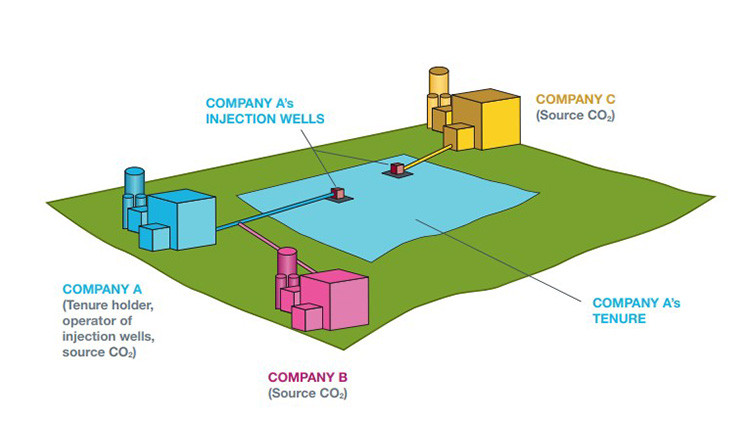
Illustration showing an example of a hub model with multiple companies injecting into one hub location. Image courtesy Government of Alberta
Studies to assess CCS potential and capacity are underway across the country today, from the B.C. Lower Mainland to sedimentary basins offshore Eastern Canada.
Another potentially enormous energy-related resource in Canada’s sedimentary basins is lithium, a key metal for the production of batteries. Electrification and energy storage are big components of future energy, so demand for batteries – and lithium – is skyrocketing.
Canadian explorers are global leaders in the effort to produce saline brines, extract the dissolved lithium, and re-inject the brines back into their subsurface reservoirs. The technology, engineering, and most importantly the geological resources to make this possible all exist in Western Canada, with companies looking to start commercial production within the next couple of years.
What About Natural Hydrogen?
Many believe that hydrogen will play an ever-increasing role in the global energy economy. Canada is a big hydrogen producer today, manufacturing hydrogen from natural gas for use in industrial processes, and actively reducing emissions by using CCS.
But manufactured hydrogen – including green hydrogen made with renewable electricity – isn’t an energy source. It’s simply an energy medium that can be moved around like electricity.
The real hydrogen energy potential lies in geologic (or “natural”) hydrogen that can be produced from the subsurface in the same way that natural gas is produced.
So far, the world has one very small producing field, in the West African nation of Mali.
Canada has geology favourable for natural hydrogen, and a number of properties in BC, Manitoba and Quebec have already been staked for hydrogen exploration and development work. If geologic hydrogen can be proven commercial, Canada will be a leader.
Will Canada Become an Energy Superpower?
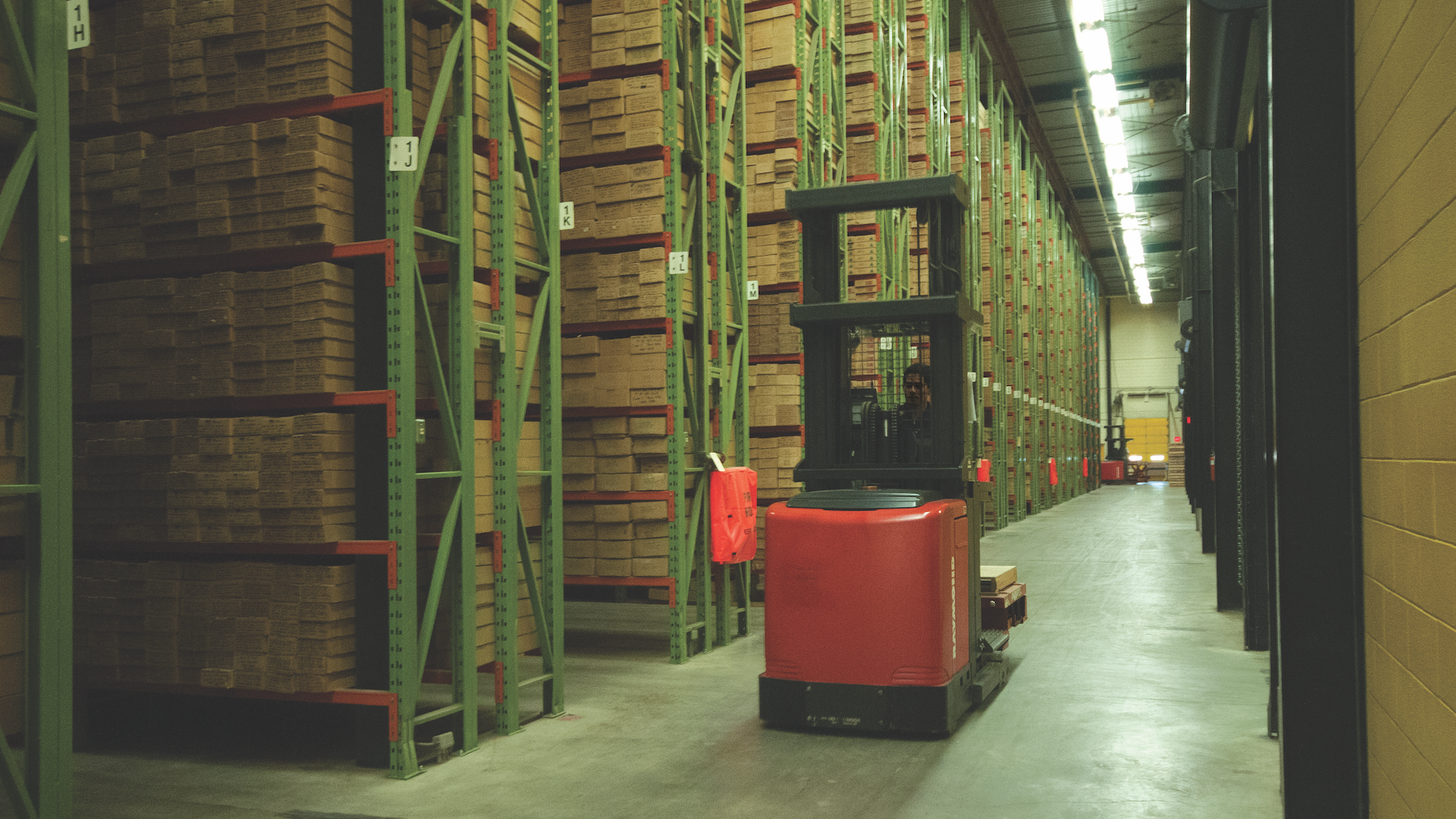
Stacks of geological core samples are stored up to 8.5 metres high on specially designed racks at the Alberta Energy Regulator’s Core Research Centre in Calgary. Photo courtesy AER
Canada has excellent potential to become an energy superpower. Our energy resources are enormous and diverse, supported by incredible geological riches across the entire country.
We’re a world-class exporter of oil, gas, coal, uranium and hydroelectricity.
Canada has the geologic resources to become even more dominant in all of these, as well as in new areas like carbon storage, lithium extraction and geologic hydrogen.
We have to recognize that while Canada is blessed with immense energy resources, those resources exist in specific places and require specific processes to extract. We can produce oil and gas, coal, uranium (and maybe geologic hydrogen) only from the pools and fields where they occur.
This is true even more broadly – we can generate hydroelectricity only from the rivers where the water flows, solar electricity only where there’s sufficient sunshine, and wind electricity only where it’s sufficiently windy.
A bigger challenge sometimes is not only accessing and producing the energy resources from the places they exist, but moving them to markets via rail, road, pipeline or transmission line – which of course comes with a whole different set of environmental, financial and social issues.
Will Canada be an energy superpower? We have unparalleled resource opportunities, but there’s still a lot of work to do.
Brad Hayes holds a PhD in geology from the University of Alberta, where he is an Adjunct Professor in Earth and Atmospheric Sciences. He has spent more than 40 years studying and assessing subsurface energy resources.
The unaltered reproduction of this content is free of charge with attribution to the Canadian Energy Centre.
